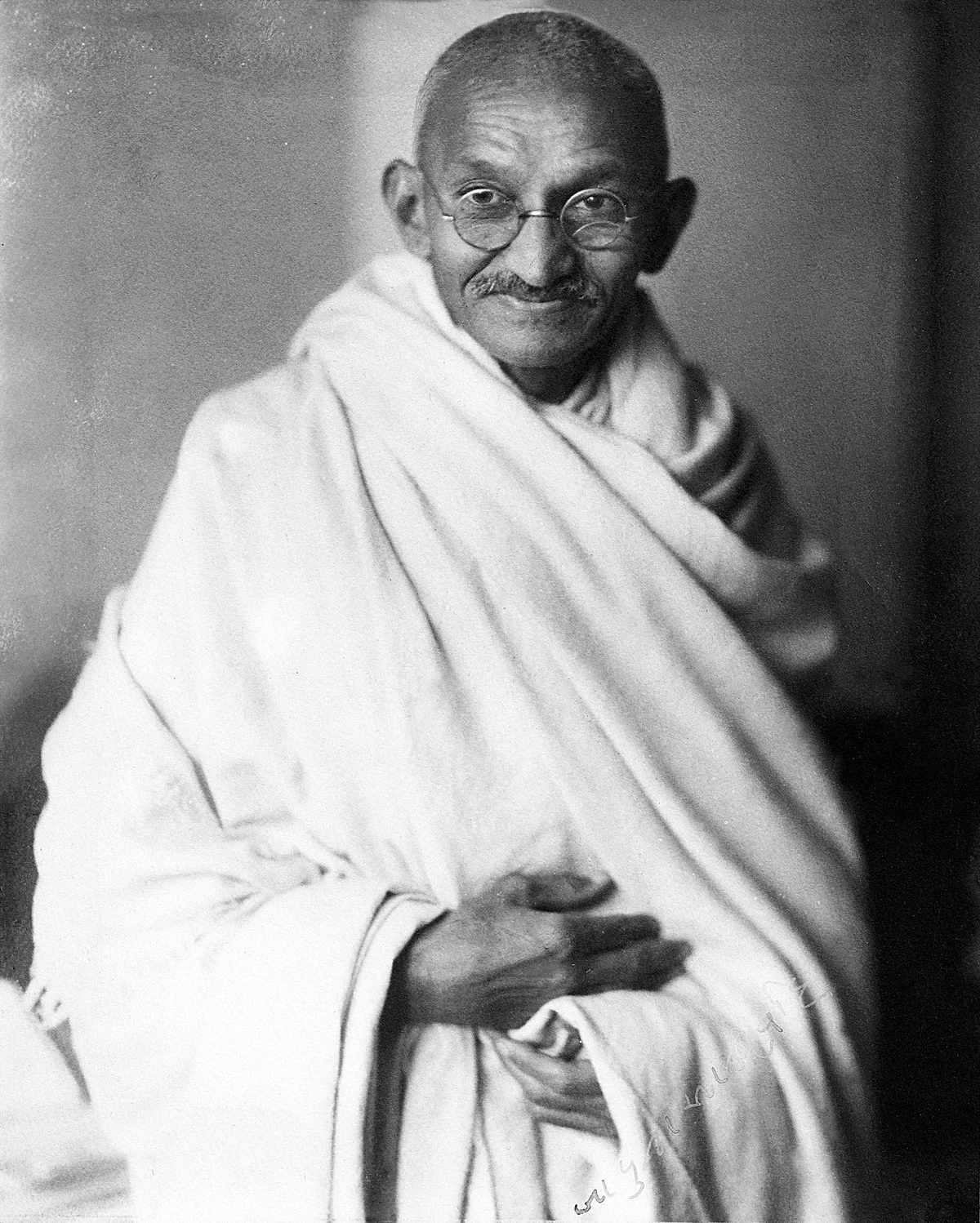Birth Chart/Janam Kundli Summary
In Birth chart (Janam Kundli) of Mahatma Gandhi : Ascendant/Lagna is Libra/Tula(Swathi nakshatra), Moon (Chandra) is in sign of Cancer/Karka (Aslesha nakshatra), Sun (Surya) is in sign of Virgo/Kanya (Hastha nakshatra), Mars (Mangal) is in sign of Libra/Tula (Visakha nakshatra), Mercury (Budh) is in sign of Libra/Tula (Swathi nakshatra), Venus (Shukra) is in sign of Libra/Tula (Visakha nakshatra), Jupiter (Guru) is in sign of Aries/Mesha (Krittika nakshatra) and Saturn (Shani) is in sign of Scorpio/Vrishchika (Jyeshta nakshatra).
While Rahu is in sign of Cancer/Karka (Pushya nakshatra) and Ketu is in sign of Capricorn/Makara (Sravana nakshatra).
Mahatma Gandhi's Planetary Position
| Planet | House | Zodiac | Degree | Motion | Nakshatra | Pada |
|---|
Frequently Asked Questions (FAQs)
What is the Lagna/Ascendant of Mahatma Gandhi?
What is the Sun Sign/Surya Rashi of Mahatma Gandhi?
What is the Moon Sign/Chandra Rashi of Mahatma Gandhi?
How is Jupiter/Guru placed in Mahatma Gandhi‘s Kundli / Birth chart?
How is Venus/Shukra placed in Mahatma Gandhi‘s Kundli / Birth chart?
How is Mars/Mangal placed in Mahatma Gandhi‘s Kundli / Birth chart?
How is Mercury/Budh placed in Mahatma Gandhi‘s Kundli / Birth chart?
How is Saturn/Shani placed in Mahatma Gandhi‘s Kundli / Birth chart?
How is Rahu placed in Mahatma Gandhi‘s Kundli / Birth chart?
How is Ketu placed in Mahatma Gandhi‘s Kundli / Birth chart?
Does Mahatma Gandhi‘s Kundli / Birth chart have Mangalik/Kuja Dosha?
But, when analysed with Lal Kitab sutras, birth chart (Janam Kundli) of Mahatma Gandhi, does not have Mangalik/Kuja Dosha
Caution: Behavioural study of native is necessary to conclude that native has Mangal/Kuja Dosha or not
Does Mahatma Gandhi‘s Kundli / Birth chart have Grahan Dosha?
About Mahatma Gandhi
Mohandas Karamchand Gandhi (2 October 1869 – 30 January 1948) was an Indian lawyer, anti-colonial nationalist, and political ethicist who employed nonviolent resistance to lead the successful campaign for India's independence from British rule. He inspired movements for civil rights and freedom across the world. The honorific Mahātmā (from Sanskrit, meaning great-souled, or venerable), first applied to him in South Africa in 1914, is now used throughout the world.
Born and raised in a Hindu family in coastal Gujarat, Gandhi trained in the law at the Inner Temple in London and was called to the bar at the age of 22. After two uncertain years in India, where he was unable to start a successful law practice, Gandhi moved to South Africa in 1893 to represent an Indian merchant in a lawsuit. He went on to live in South Africa for 21 years. Here, Gandhi raised a family and first employed nonviolent resistance in a campaign for civil rights. In 1915, aged 45, he returned to India and soon set about organising peasants, farmers, and urban labourers to protest against discrimination and excessive land tax.
Assuming leadership of the Indian National Congress in 1921, Gandhi led nationwide campaigns for easing poverty, expanding women's rights, building religious and ethnic amity, ending untouchability, and, above all, achieving swaraj or self-rule. Gandhi adopted the short dhoti woven with hand-spun yarn as a mark of identification with India's rural poor. He began to live in a self-sufficient residential community, to eat simple food, and undertake long fasts as a means of both introspection and political protest. Bringing anti-colonial nationalism to the common Indians, Gandhi led them in challenging the British-imposed salt tax with the 400 km (250 mi) Dandi Salt March in 1930 and in calling for the British to quit India in 1942. He was imprisoned many times and for many years in both South Africa and India.
Gandhi's vision of an independent India based on religious pluralism was challenged in the early 1940s by a Muslim nationalism which demanded a separate homeland for Muslims within British India. In August 1947, Britain granted independence, but the British Indian Empire was partitioned into two dominions, a Hindu-majority India and a Muslim-majority Pakistan. As many displaced Hindus, Muslims, and Sikhs made their way to their new lands, religious violence broke out, especially in the Punjab and Bengal. Abstaining from the official celebration of independence, Gandhi visited the affected areas, attempting to alleviate distress. In the months following, he undertook several hunger strikes to stop the religious violence. The last of these was begun in Delhi on 12 January 1948, when Gandhi was 78. The belief that Gandhi had been too resolute in his defence of both Pakistan and Indian Muslims spread among some Hindus in India. Among these was Nathuram Godse, a militant Hindu nationalist from Pune, western India, who assassinated Gandhi by firing three bullets into his chest at an interfaith prayer meeting in Delhi on 30 January 1948.
Gandhi's birthday, 2 October, is commemorated in India as Gandhi Jayanti, a national holiday, and worldwide as the International Day of Nonviolence. Gandhi is considered to be the Father of the Nation in post-colonial India. During India's nationalist movement and in several decades immediately after, he was also commonly called Bapu, an endearment roughly meaning "father".
Kundli Database Bank
At, Agyat Astrology, we have wast range of kundli database, with advanced search where you are allowed to search from profession, major events, planet combinations (including zodiac), Lagna Ascendant.
With Advanced search, one can search people having Sun and Ketu Combination in 2nd house having profession as government official. Advanced search is a paid service, so to avail kundli database with advanced search pleae mail us as care@agyat.one
This is a standard search where you can search database bank with name of celebrities/public personalities


